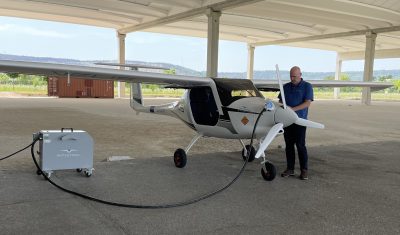
**Corrected**
Sealand Flight of Campbell River, British Columbia, announced this week that it will be adding a battery-electric two-seat training aircraft to its training fleet later this month. Designed and manufactured by Pipistrel of Slovenia, the Velis Electro first received European certification a couple of years ago and is working with Transport Canada to develop a training syllabus that recognizes the unique characteristics of all-electric aircraft. Sealand will also require a special operations certificate from Transport Canada to operate the aircraft.
“The integration of electric airplanes into our fleet of training aircraft is a testament to Sealand’s immense dedication to sustainability and innovation in aviation,” Sealand Flight spokesman Mike Andrews said in a press release.
The Velis Electro has a maximum cruise speed of 98 knots, a maximum altitude of 12,000 feet and has a useful load of 378 pounds. Its endurance is 50 minutes. These parameters, significantly less than traditional training aircraft powered by internal combustion engines (ICE), are more suitable for training duties within an airport environment or close by. Student pilots may still have to rely on ICE-powered aircraft for cross-country training requirements.
Pipistrel, acquired by Textron Aviation in 2022, began developing electric aircraft in 2007 with the Taurus Electro. Seventeen years later, the Velis Electro is now certified for Day VFR pilot training in over 30 countries.
With no CO2 emissions and a considerably reduced noise footprint, the Electro should prove popular with those who want a more environmentally friendly training experience. With no direct fuel costs other than an increased electricity bill, and far less maintenance costs, the more than $250,000 to acquire one may work out to be a savvy investment for flight schools.
